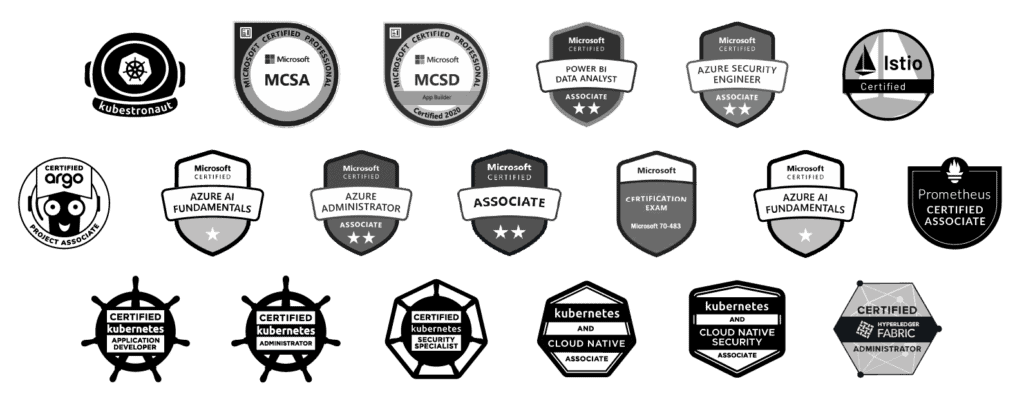In the era of digital transformation, businesses are continually searching for innovative ways to improve customer experiences and streamline their operations. Customer support chatbots have emerged as indispensable tools in achieving these goals.
They harness the capabilities of Artificial Intelligence (AI) and Natural Language Processing (NLP) to provide efficient and personalized assistance, revolutionizing the way companies interact with their customers.
In this blog post, we will delve into two reference architectures that illustrate how to build robust and effective customer support chatbots, one utilizing Azure OpenAI APIs and the other integrating open-source LLM/Langchain.
The Significance of Customer Support Chatbots.
Before we dive into the technical aspects of creating chatbots, let’s take a moment to recognize why they have become crucial for businesses:
24/7 Availability
Chatbots are accessible at any time, ensuring that customers can receive assistance whenever they require it, even outside regular business hours.
Efficiency
Consistency
Cost Savings
Reference Architecture 1:
Azure OpenAI API Integration
Azure OpenAI API offers potent AI capabilities that you can harness to construct an advanced customer support chatbot. Here’s an outline of the reference architecture for this integration:
In this setup:
- Users interact with the chatbot through various channels, such as websites, messaging apps, or voice interfaces.
- The user inputs are gathered and sent to the chatbot application.
- The chatbot application serves as the core of the system, responsible for processing user queries and generating responses. It leverages Azure OpenAI API to perform Natural Language Processing (NLP) tasks such as intent recognition, sentiment analysis, and language understanding.
- The application also stores conversation context and user history to ensure seamless interactions.
- Azure OpenAI API provides the necessary AI capabilities to comprehend and generate human-like text responses. It utilizes models like GPT-3 to create context-aware and informative responses. This API can be fine-tuned to cater to specific industries or use cases.
- The chatbot integrates business logic to manage particular tasks or workflows and integrates seamlessly with Customer Relationship Management (CRM) systems, databases, and other business applications to access customer data and provide personalized assistance.
- The chatbot generates responses by utilizing insights gathered from Azure OpenAI API, tailoring them based on user intent, sentiment, and historical data.
- The system also collects user feedback to enhance responses and continually refines the chatbot’s performance. Analytics and reporting mechanisms capture data on user interactions, response times, and chatbot effectiveness, offering insights for continuous optimization and performance monitoring.
Reference Architecture 2:
Open-Source LLM/Langchain Integration
In this setup:
- Users engage with the chatbot through web interfaces, messaging apps, or voice-enabled devices.
- User inputs are gathered and directed to the chatbot application.
- The chatbot application, acting as the system’s core, is responsible for processing user queries and generating responses. It integrates
- LLM (Large Language Models) and Langchain for NLP capabilities.LLM, a large language model, plays a crucial role in understanding and generating text. Langchain, an open-source framework, offers tools for natural language understanding, dialogue management, and response generation. These open-source components are highly customizable and adaptable to specific use cases.
- Business-specific logic is incorporated into the chatbot to handle specific tasks or workflows. Integration with CRM systems, databases, and external APIs allows access to customer data and context.
- Responses are generated by the chatbot by leveraging the collaborative capabilities of LLM and Langchain components. These responses can be fine-tuned and customized according to the business’s specific requirements.
- The chatbot actively collects user feedback to continuously improve responses and refine its performance. It employs machine learning techniques to adapt and enhance over time. Additionally, analytics and reporting functionalities capture data on user interactions, chatbot performance, and response quality, providing insights for ongoing optimization and monitoring.
Selecting the Right Approach
Choosing between Azure OpenAI API and open-source LLM/Langchain integration should be guided by various factors, including budget constraints, customization requirements, and data privacy concerns. Organizations should evaluate their specific needs and goals to make an informed decision.
In today’s era of digital transformation, efficient customer support chatbots have become invaluable assets for businesses aiming to enhance customer experiences, optimize operations, and reduce costs. Whether you opt for Azure OpenAI API integration or open-source LLM/Langchain, the reference architectures presented in this blog post serve as roadmaps for developing efficient and effective chatbot solutions. By carefully considering your organization’s unique needs, you can harness the capabilities of AI and NLP to create chatbots that deliver exceptional customer support.
Whether you choose cloud-based AI or open-source innovation, the future of customer support is marked by smarter, more efficient, and more customer-centric solutions than ever before.











